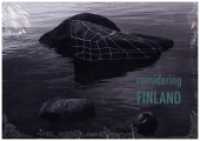Full Description
Want to use Critical Discourse Analysis, but not sure where to start? This book is the complete toolkit you need.
Each chapter presents distinct concepts and ideas in Critical Discourse Analysis, explaining how to use them in your research - and why. Packed with case studies of news texts, social media content, memes, promotional videos, institutional documents, infographics and webpages, the book shows you how to apply each set of tools to real life examples.
Most importantly, examples, case studies, and revised opening chapters of this second edition show how multimodal Critical Discourse Analysis can help us to understand the role of language in the functioning of society and politics today, shaping our priorities for what to do and how to act.
This book is an inspiring and valuable resource for any undergraduate students and researchers who wish to understand and use Critical Discourse Analysis.
Contents
Introduction: shaping the world through language
Making active choices: Language as a set of resources
Analysing semiotic choices: Words and images
Presenting speech and speakers: Quoting verbs
Representing people: Language and identity
Representing action: Transitivity and verb processes
Concealing and taking for granted: Nominalisation and presupposition
Persuading with abstraction: Rhetoric and metaphor
Committing and evading: Truth, modality and hedging
Conclusion: Doing critical discourse analysis and its limitations








